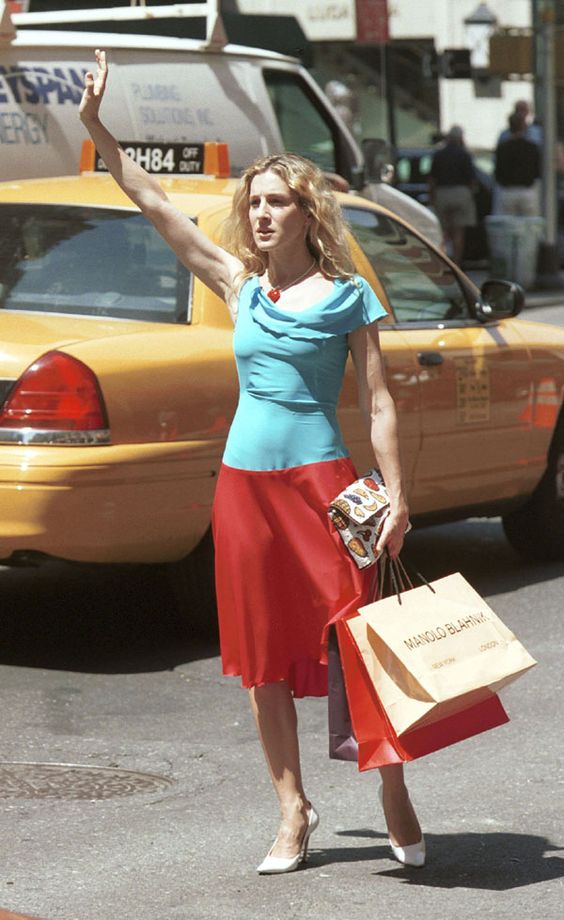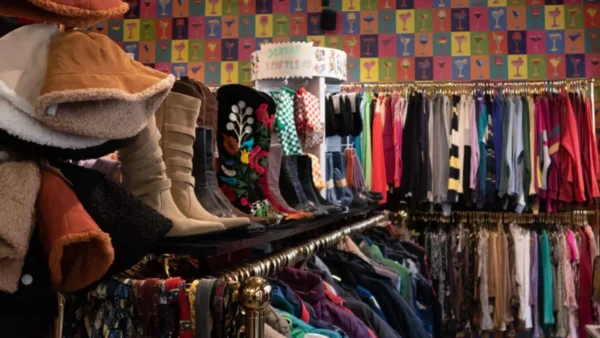
Living Like Carrie Bradshaw – 5 Reasons It Won’t Work

Carrie Bradshaw was a “household name” for many, from 1998-2004. These were the six years during which the HBO series, “Sex and the City” aired. A lot of women sat through the weekly episodes, admiring her independence, self-confidence, wardrobe, and general New York lifestyle, while also being enthralled, and perhaps a bit shocked, by her sexcapades. Overall, Carrie became a more contemporary version of Mary Tyler Moore of decades before – another single independent female living in Minneapolis and working for a TV station. But there, the similarities end.


Mary Tyler Moore typified the young American Working girl of the time – living on a moderately within her income, having healthy social relationships with females and males, and pretty standard relationships with her co-workers. She was seen as the “girl next door” character, and it was easy for other young women to relate to her life and work styles.
Carrie Bradshaw, on the other hand, is probably an unrealistic model, not because some contemporary young people wouldn’t like to live as she does, but because it is unrealistic. It really won’t work, and here are five reasons why.
1) Life in New York City:

In the first season, Carrie is living in an apartment above a coffee shop. This is somewhat realistic, given that she writes a column for a newspaper for a living. Young journalists, early in their careers, typically do not enjoy high incomes, even if their columns become popular as hers did.

Housing in New York city is extraordinarily high, and by season two, Carrie is in a Manhattan brownstone. Granted, this was originally purchased by a boyfriend, but, once they broke up, she was able to purchase it from him. She could hardly afford such a purchase, given what she was earning at the time. It was not until season five that she got a book deal, and began to write for Vogue. Her income would have increased significantly at that time, but not before. And just getting both a book deal and a position with Vogue themselves are really exceptions rather than the rule for most young, aspiring career journalists.
2) Wardrobe:

This is perhaps the most unrealistic part of Carrie’s lifestyle. In her moderate income, she manages to spend an average of $400 for pairs of shoes, and has at least 100 pair, which she admits. That’s $40,000 on shoes alone. And for clothing, she is a frequent shopper at Barneys, Bloomingdale’s, and Saks Fifth Avenue to name a few. This is unfortunately an impossibility. Even if someone maxed out their credit cards, as she does, other expenses, such as rent/mortgage, utilities, etc. would not be met. Being this kind of “fashion plate” is certainly a romantic ideal, but it is just that. The wardrobe just does not “work” for someone of her income status.
3) Female Relationships:

It is difficult to understand how Carrie’s female friends are willing to stick it out with her. While they admire and perhaps even envy her self-confidence and her ambition/drive, she presents a persona that is self-centered and narcissistic, and certainly impulsive. The fact that she would even be willing to betray one of her female friends by having a sexual encounter with her boyfriend says volumes about her personality. When she gets together with her female friends, it’s all about her drama and her issues.

Realistically, there are not many female friends who would put up with Carrie and her self-absorption. It would become tiresome. “Normal” women would avoid her.
4) Male Relationships:

Carrie’s love life is pretty much in shambles throughout the series. Having admitted to her friends that she lost her virginity in high school in a “smelly rec room” and had an abortion after a one-night tryst with a bartender (both not too difficult to imagine), we see Carrie hop from one man to the next, all the while pining for “Mr. Big,” the wealthy man who doesn’t seem able to make a commitment.


There is Aidan, a relationship that actually results in an engagement before it is ended, Jack Burger, and Aleksandr. Each of these men has an interesting background and career (e.g., novelist, wealthy artist, furniture designer), but the relationships are “incomplete,” because Mr. Big is always in the background and in and out of her life.
While this relationship lifestyle is certainly possible in contemporary times, it is not too realistic. For Mr. Big to keep “showing up” in her life, with chance encounters, is not common. Although it does happen. We all know about that ex who never really lets you go.
In the end, Mr. Big returns once more with the statement she has always longed to hear, “You are the one.” A romantic ending, suggestive of a “B” romance novel, is also pretty unrealistic. As a novel, in fact, Carrie’s life and romances might easily be translated into a number of foreign languages and hit the best seller list in other countries.
5) The Entire Picture Doesn’t Work…

One of the reasons that “Sex and the City” was such a popular series, especially with females, is that, in their fantasies, they could vicariously live through the exciting, romantic, irresponsible life of Carrie every Sunday night.
Certainly, there are pieces of Carrie’s personality and behaviours that most women can relate to – letting emotions gain control at times, making irresponsible purchases and letting credit card debt get too high on occasion, even having an affair or two.
At the same time, women can certainly admire Carrie’s ambition and drive, as she pushes her career forward. And many can relate to that within their own career goals.
But putting all of this together in a single package presents a dichotomy that is hard to reconcile with reality. For a woman who is self-confident, assertive, and supposedly on sure-fitting, her insecurities, impulsivity, and surrender to emotions in other areas of her life do not seem credible.
For those who are seriously looking for a Carrie Bradshaw existence, “living this dream” will be difficult indeed. Life in New York City for young people just entering their career paths is a struggle, and the issues that Carrie just seems to sail through can be far more difficult in reality.















































